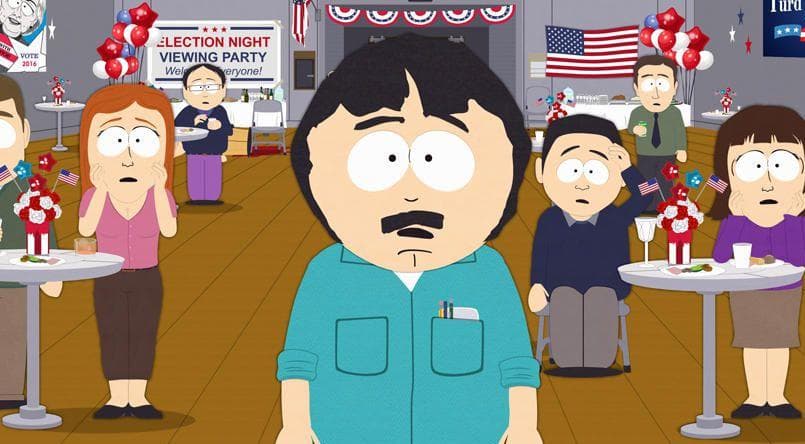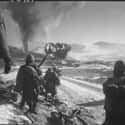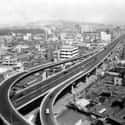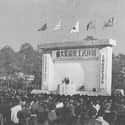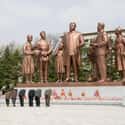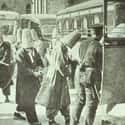-
(#7) Maoist China Intervened On The Side of North Korea
Just as the Korean War appeared to be over, China sent its armies into Korea in November 1950 to fight the UN forces. Even after initial attacks, the UN forces led by MacArthur continued to discount the size of the Chinese force, which was 300,000 strong. Overwhelmed by the human-wave tactics used by the Chinese Communist forces, UN forces were turned back in disarray.
By the beginning of the new year, they were defending a line south of Seoul. The line held, however, and the UN forces were again able to push north to the 38th parallel.
-
(#8) Korea Would've Been Reunited By Nuclear Fallout If MacArthur Had His Way
Given China's intervention into the war, MacArthur came up with a surefire strategy to win under the new circumstances: 30 to 50 atomic bomb drops. They would be targeted at completely destroying both China's and North Korea's air force. This done, he would then spread a defensive perimeter of radioactive cobalt along the Chinese-Korean border, preventing any further land invasion. Their supply lines cut, the North Korea army would be quickly starved into submission.
Truman and the Joint Chiefs of Staff were not on board. Besides fears that Russia would enter the war, starting WWIII, they really didn't want to carve a swath of radioactive fallout across east Asia. Instead, they opted to fire MacArthur in April 1951.
-
(#11) Capitalism Took A Firm Hold In South Korea
Even as democracy was floundering, capitalism was making great strides in South Korea. While the country could hardly be described as a free market in the years after the Korean War, their brand of state-controlled capitalism managed to transform the country from a poor, rural country to a prosperous, modern nation.
A focus on export production helped drive growth in South Korea during the 1960s and beyond, and while there was still corporate rent-seeking and favoritism, it was manageable. Interestingly, the authoritarian nature of the government insulated it from regulatory capture by special interests. Ultimately, the growth witnessed during the period (7% per year) provided a high level of prosperity and stability to the country.
-
(#4) In 1948, Two Governments Were Formed In The Two Zones
Initially, the idea was to unify Korea under one government when it was split in the wake of WWII. However, the occupying US and Soviet forces couldn't agree if said government would be capitalist and democratic or communist. Notably, Korea had never been either before, only having experience as a caste-based monarchy and a subservient colony, respectively.
To solve the impasse, the US basically set up anti-communist Syngman Rhee as the President of the Republic of Korea with United Nations sanctioned elections in August. In September, the Soviet Union set up former Soviet Red Army Major Kim Il-sung as the Premier of the Democratic People’s Republic of Korea (in the Stalinist, "cult-of-personality" model). Each of the two governments claimed sovereignty over the whole of the Korean Peninsula.
-
(#12) North Korea Remains A Communist Dictatorship
North Korea started its existence with an economic advantage due to the fact that it was the industrial center of the Japanese colony. Combined with the massive assistance it received from the Soviet Union, the country was poised to become a modern, industrial nation. Unfortunately, it could not maintain the lead.
In the 1960s, the Soviet Union withdrew support after the Sino-Soviet split. During the 1970s, North Korea's economy began to falter due to depleted oil reserves. In 1980, the country defaulted on its debt. Between 1996 and 1999, the country suffered from a famine that killed between 600,000 and 900,000 people.
The problems faced by ordinary citizens in North Korea since the Korean War make South Korea seem like paradise in comparison. North Korea remains the only surviving Stalinist regime, ruled by the Kim family with an iron fist. The country still has concentration camps where political dissidents are imprisoned and tortured.
-
(#2) Korea Was A Colony Of Japan From 1910 To 1945
Nominal Japanese rule over Korea actually began after the First Sino-Japanese War in 1895, when Korea essentially changed from a tributary of Qing China to a tributary of Japan. From the start, the Japanese systematically imposed rule on the declining Joseon Dynasty. This culminated in the Japan-Korea Annexation Treaty of 1910, in which the Emperor of Korea formally ceded all authority to the Emperor of Japan... though he refused to sign it himself and instead sent an ambassador to Japan on his behalf.
For the first 10 years, Japan imposed harsh military rule on the new colony. In 1919, a nationwide protest demanding independence was met with overwhelming force. Different estimates place the number of protesters killed at between 553 and 7,509. After the incident, the Japanese revised and somewhat relaxed their policy of rule. Korea was rapidly modernized and industrialized in order to provide Japan with goods and resources to fuel their expansionism.
During the latter part of the 1930s, as Japan mobilized for war, conditions again became harsh. The Japanese decided to try to assimilate the Koreans, teaching school in Japanese. Koreans were made to adopt Japanese names, and after 1938, schoolchildren were actually forbidden to speak Korean. Efforts were made to eradicate native Korean culture, and Shinto was introduced, but it didn't take.
New Random Displays Display All By Ranking
About This Tool
After Japan surrendered in 1945, the Korean peninsula was bounded by the 38th parallel north and received by the Soviet Union and the United States. With the support of the United States and the Soviet Union, South Korea was established in the southern Korean peninsula in August 1948, and the Democratic People’s Republic of Korea was established in the north in September 1948.
The Korean peninsula was unified for centuries after the Joseon Dynasty, and they shared the same language and basic culture. However, in the past years, the north and south have been divided into two countries along a 38 degree north latitude. The random tool explained 12 historical reasons why there are two countries.
Our data comes from Ranker, If you want to participate in the ranking of items displayed on this page, please click here.

